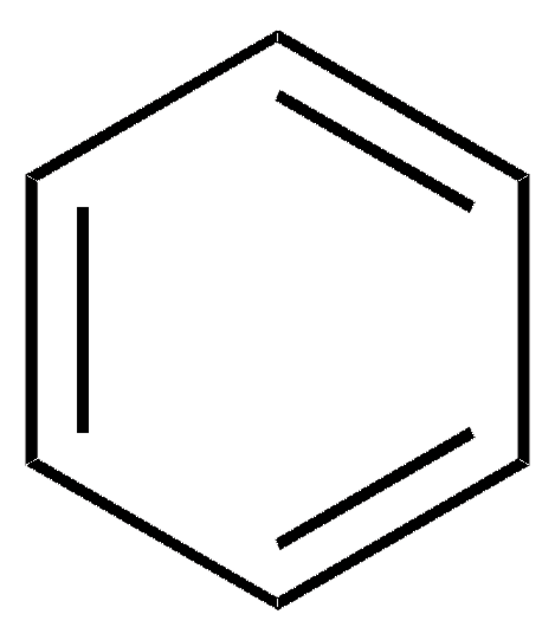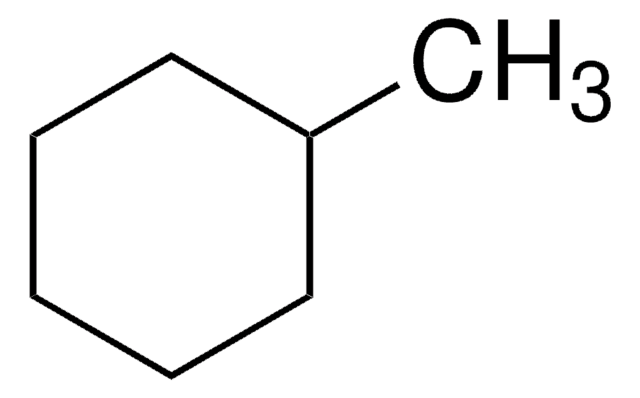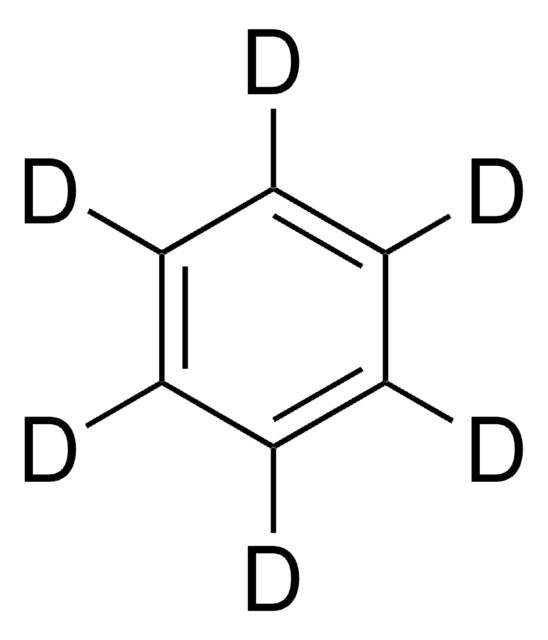Kluczowe dokumenty
About This Item
74.6 mmHg ( 20 °C)
Polecane produkty
klasa czystości
ACS reagent
Poziom jakości
gęstość pary
2.77 (vs air)
ciśnienie pary
166 mmHg ( 37.7 °C)
74.6 mmHg ( 20 °C)
Próba
≥99.0%
Formularz
liquid
temp. samozapłonu
1043 °F
granice wybuchowości
8 %
zanieczyszczenia
H2SO4, passes test (darkened)
thiophene, passes test (limit ∼1ppm)
≤0.005% S compounds
≤0.05% water (Karl Fischer)
pozostałość po odparowaniu
≤0.001%
kolor
APHA: ≤10
współczynnik refrakcji
n20/D 1.501 (lit.)
bp
80 °C (lit.)
mp
5.5 °C (lit.)
gęstość
0.874 g/mL at 25 °C (lit.)
ciąg SMILES
c1ccccc1
InChI
1S/C6H6/c1-2-4-6-5-3-1/h1-6H
Klucz InChI
UHOVQNZJYSORNB-UHFFFAOYSA-N
Szukasz podobnych produktów? Odwiedź Przewodnik dotyczący porównywania produktów
Powiązane kategorie
Opis ogólny
Zastosowanie
- Heck Reaction of vinyl bromides with styrenes to synthesize functionalized 1,3-dienes.
- Gallium-catalyzed reductive lactonization of γ-keto acids to γ-lactone derivatives.
- Anionic polymerization of styrene and 1,3-butadiene in the presence of phosphazene as a base.
Hasło ostrzegawcze
Danger
Zwroty wskazujące rodzaj zagrożenia
Zwroty wskazujące środki ostrożności
Klasyfikacja zagrożeń
Aquatic Chronic 3 - Asp. Tox. 1 - Carc. 1A - Eye Irrit. 2 - Flam. Liq. 2 - Muta. 1B - Skin Irrit. 2 - STOT RE 1
Organy docelowe
Blood
Kod klasy składowania
3 - Flammable liquids
Klasa zagrożenia wodnego (WGK)
WGK 3
Temperatura zapłonu (°F)
12.2 °F
Temperatura zapłonu (°C)
-11 °C
Wybierz jedną z najnowszych wersji:
Masz już ten produkt?
Dokumenty związane z niedawno zakupionymi produktami zostały zamieszczone w Bibliotece dokumentów.
Nasz zespół naukowców ma doświadczenie we wszystkich obszarach badań, w tym w naukach przyrodniczych, materiałoznawstwie, syntezie chemicznej, chromatografii, analityce i wielu innych dziedzinach.
Skontaktuj się z zespołem ds. pomocy technicznej







